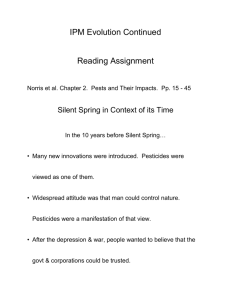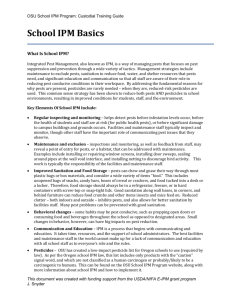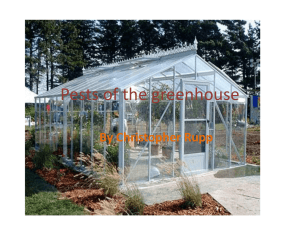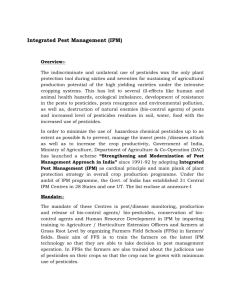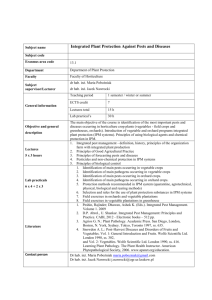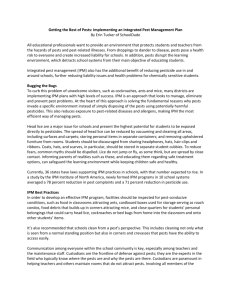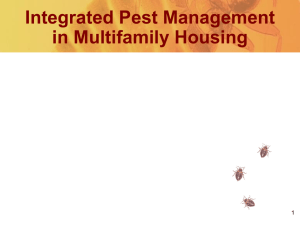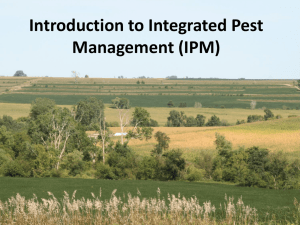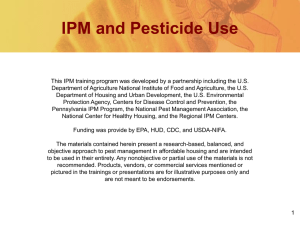Integrated Pest management in the greenhouse
advertisement
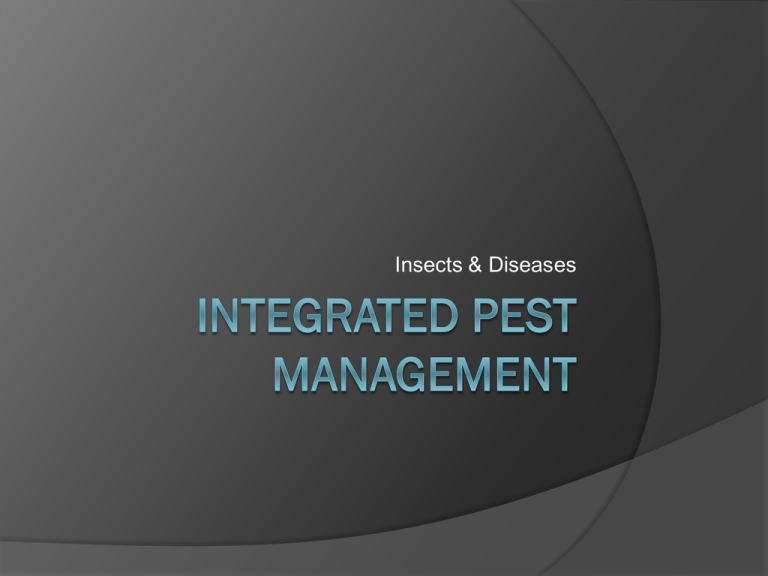
Insects & Diseases IPM Defined: "IPM is a sustainable approach to managing pests by combining biological, cultural, physical and chemical tools in a way that minimizes economic, health, and environmental risks." IPM Pest management, not eradication, is the goal. Manage pests below the economic threshold. Economic Threshold How would you define it? The point at which the disease or pest infestation begins to diminish the quality of the crop. Economic Thresholds Thresholds should be quantitative and grower driven. For example, thresholds could be based on the average number of pests per trap each week. the percent of plants or leaves found to be damaged or infested during visual inspection. the number of pests dislodged per shake sample. Economic Threshold 80 Avoid exceeding economic injury level 70 EIL 60 Apply controls 50 ET 40 Average density 30 20 10 0 Time Economic Thresholds Vary depending upon the crop. Bacterial Leaf Spot on Poinsettia: Devastating! Bacterial Leaf Spot on Greenhouse Tomatoes: Not such a big deal. Why? Insects & diseases on ornamental crops grown in nurseries: Big deal? Yes or no? Scouting and Record Keeping Also called “monitoring’. Perform weekly. In greenhouses focus monitoring near doorways, vents and fans. 1 card per 1,000 square feet. Yellow: attracts most flying insects Blue: for thrips Replace cards on a regular basis. Cultural IPM Tactics Sanitation The goal of sanitation is to eliminate all possible sources of the pest. weed removal inside and outside the greenhouse. ○ grass flowering-increase in thrips population weed removal around nurseries. dispose of dead/diseased plants. In greenhouses: ○ quarantine infested plants in a separate room. ○ medium pasteurization (especially if it contains soil). ○ algae control-fungus gnats. Watering Too much moisture: leaf diseases root rots fungus gnats algae Too little moisture: stresses the plants and predisposes it to disease hot, dry conditions favor spider mites Temperature Plants begin to stress at temperatures of 95 degrees F. and higher. Temperature fluctuations. Growing Medium Should have good aeration/drainage. Monitor EC. Variety Selection Choose insect/disease resistant varieties. If possible, rotate crops. Physical/Mechanical IPM Tactics Insect Screening Biological IPM Tactics The use of living organisms to control pests. Lady Bugs Parasitic Wasps Predatory Mites Chemical IPM Tactics: Biorational Pesticides Conventional Pesticides Biorational Pesticides: Insecticidal Soaps Horticultural Oils Bacillus thuringiensis-bacteria Beauveria bassiana-fungus that infects the chitin exoskeleton of many pests Diatomaceous Earth IGR’s kill insects by disrupting their development Conventional Pesticides Licensed Applicator WPS Re-entry Times Residue Resistance rotate between groups/active ingredients Major Insect Pests of Greenhouse-Grown Bedding Plants: Aphids Thrips Fungus Gnats Whiteflies Shore Flies Leafminers Mealybugs Spider Mites Aphids Immature & Adult Greenhouse Thrips Thrips Life-Cycle Greenhouse Whiteflies Mealybug excreting honeydew Two-spotted Spider Mite Red Spider Mite END
